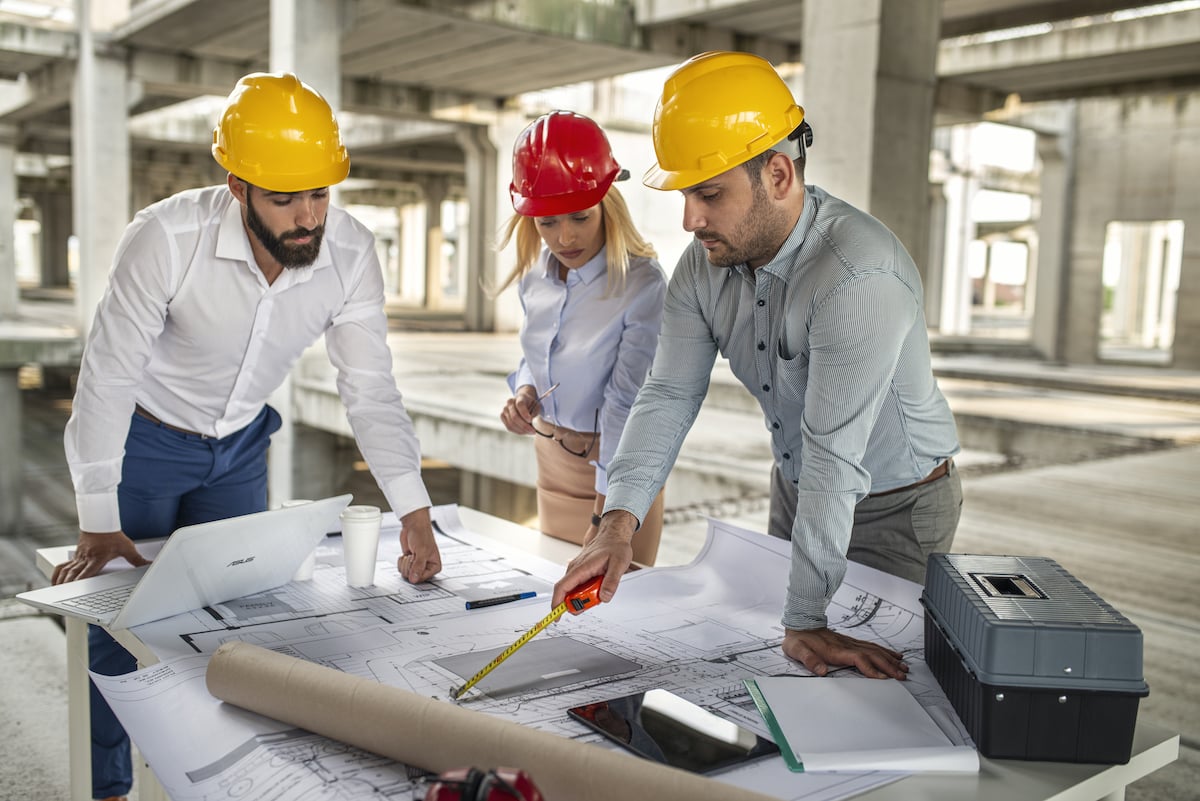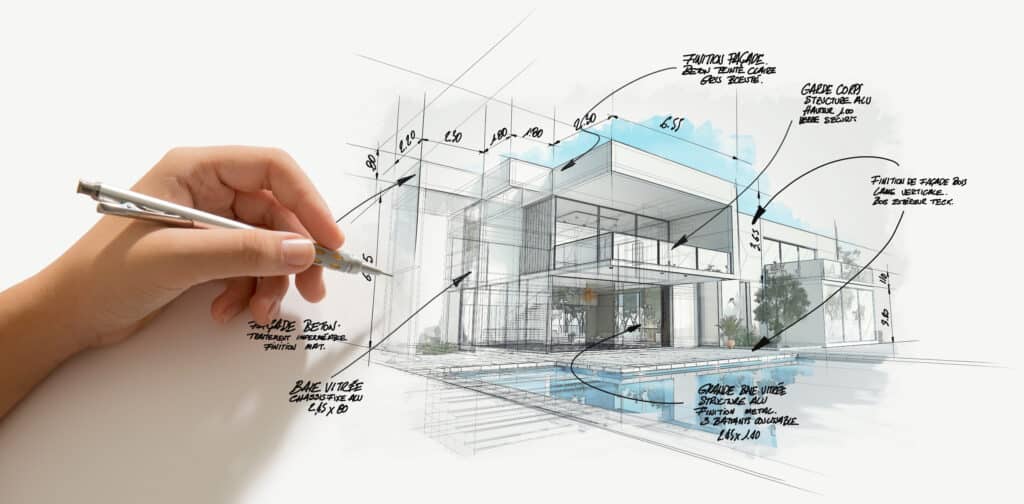Comprehending the Diverse Career Paths Available for Aspiring Architect
As a hopeful Architect, you have a world of job paths awaiting you. Each path supplies special challenges and possibilities to apply your creativity and technological expertise. Whether you're drawn to typical architecture or the subtleties of lasting style, there's a niche that lines up with your passions. Understanding these varied choices can shape your expert trip, but which direction will you pick to discover first?
Typical Architecture: Designing Structures and Frameworks
Conventional design concentrates on designing buildings and structures that blend performance with visual allure. As you discover this area, you'll value the intricate balance between form and function. You'll discover to attract inspiration from historic designs, including components like proportion, products, and workmanship. Your layouts can reflect cultural heritage, showcasing local customs while satisfying contemporary requirements.
You'll develop skills in drafting, model-making, and website evaluation, allowing you to imagine and communicate your ideas effectively. Engaging with customers, you'll require to comprehend their vision and translate it into feasible layouts.
In addition, constructing codes and sustainability methods are crucial in your job, ensuring your frameworks are secure and eco-friendly. As you expand in your occupation, you'll discover opportunities in residential, business, or also remediation tasks, each offering one-of-a-kind obstacles. Welcoming standard architecture leads the method for a fulfilling job that admires the past while forming the future.
Urban Preparation: Shaping Communities and Public Spaces
As an ambitious Architect, you can play an important duty as a metropolitan organizer, transforming just how neighborhoods function and engage. By employing area engagement methods, you'll guarantee that homeowners have a voice in shaping their atmosphere. And also, integrating sustainable design concepts will certainly aid create areas that not only fulfill today's demands yet likewise secure the future.
Role of Urban Planners
While several might think of architects as the sole visionaries behind buildings, metropolitan coordinators play a necessary duty in forming the more comprehensive landscape of communities and public spaces. By working together with numerous stakeholders, you'll aid create parks, transportation systems, and domestic areas that advertise social communication and availability. Your know-how in spatial style and neighborhood characteristics permits you to visualize future growth while maintaining social heritage.
Community Interaction Strategies
Reliable area engagement methods are essential for urban planners to ensure that the voices of citizens are listened to and valued in the preparation process. To promote significant discussion, you need to focus on open forums and workshops where community members can express their ideas and worries. By actively integrating and listening feedback, you'll develop spaces that reflect the neighborhood's requirements, eventually leading to even more sustainable and successful metropolitan atmospheres.
Sustainable Style Principles
When creating metropolitan areas, integrating sustainable design principles is vital for creating environments that flourish both ecologically and socially. You should begin by concentrating on power effectiveness, utilizing materials that decrease waste and promote recycling. Take into consideration incorporating environment-friendly rooms, like parks and yards, to boost biodiversity and enhance air top quality. Advertising walkability and public transportation can lessen reliance on cars and trucks, promoting a healthier area.
Designing with water conservation in mind is additionally essential-- think of rain yards and permeable surface areas to manage stormwater. Entailing area members throughout the planning procedure assurances that the rooms you create fulfill their requirements and urge social interaction. By welcoming these principles, you'll add to dynamic, lasting urban landscapes that profit everyone.

Landscape Design: Producing Sustainable Exterior Atmospheres
As you explore landscape style, you'll find vital design concepts that produce useful and lovely outdoor rooms. Lasting practices play a vital function in guaranteeing these settings flourish while minimizing environmental effect. Plus, you'll discover a variety of job chances that permit you to make a genuine distinction in exactly how individuals engage with nature.
Style Concepts in Landscape
Comprehending layout principles in landscape architecture is important for producing sustainable outdoor environments that harmonize with nature. You'll need to ponder aspects like scale, balance, and percentage to guarantee your styles really feel natural and inviting. Integrating indigenous plants not just enhances biodiversity however additionally decreases water use, making your landscape resistant. Think of the circulation of space and exactly how individuals connect with it; pathways and seating areas must welcome exploration and relaxation. Additionally, take note of seasonal changes, creating with products that enhance the environments year-round (Architect). By prioritizing sustainability and aesthetics, you can create outside rooms that improve the community and promote well-being. Welcoming these principles will set a strong foundation for your job in landscape design.
Sustainable Practices Introduction
Lasting techniques in landscape style not just concentrate on appearances however additionally prioritize eco-friendly health and source preservation. By integrating indigenous plants, you enhance biodiversity and lower the need for chemical fertilizers and pesticides. Applying efficient irrigation systems helps save water and decreases overflow, securing neighboring communities. You can develop spaces that promote dirt health and wellness, such as practicing and using organic products permaculture principles. In addition, integrating eco-friendly infrastructure, like rainfall yards and permeable pavements, help in stormwater monitoring and minimizes urban warmth. When you produce exterior atmospheres with sustainability in mind, you add to a much healthier world and offer rooms that promote community link. Eventually, these techniques assure your styles benefit both individuals and the setting for many years to come.
Profession Opportunities Exploration
With a solid structure in sustainable techniques, landscape style supplies a variety of job courses that allow you to make a meaningful effect on the environment. You could work as a landscape designer, producing visually pleasing and useful outside areas, or focus on eco-friendly repair, assisting to restore broken ecological communities. Urban coordinators often work together with landscape engineers to create environment-friendly spaces in city setups, improving city livability. If you're passionate about education, think about becoming a landscape style teacher, inspiring future generations. Furthermore, you could function with nonprofits concentrated on ecological sustainability or participate in research to introduce brand-new practices. Each course not just forms gorgeous atmospheres however also promotes a much healthier world for future generations.
Sustainable Design: Concentrating on Eco-Friendly Practices
As you explore your profession in architecture, embracing eco-friendly techniques can establish you apart in a competitive area. Lasting design focuses on developing buildings that minimize environmental effect while improving resident well-being. By incorporating eco-friendly materials, energy-efficient systems, and lasting building strategies, you'll add to a greener future.
Start by obtaining understanding of green accreditations like LEED or BREEAM, which can reinforce your credentials. Consider just how all-natural light, ventilation, and thermal performance can optimize style. Team up with designers and environmental professionals to introduce services that decrease waste and save sources.
Don't neglect the relevance of community participation-- interesting local stakeholders can motivate designs that balance with the atmosphere. As customers increasingly prioritize sustainability, your competence in environmentally friendly techniques will certainly not only draw in jobs yet also meet your interest for responsible design. Welcome this vital aspect of the profession, and enjoy your job flourish.
Historic Preservation: Securing and Recovering Social Heritage
While you commence on your architectural journey, think about the crucial role of historic preservation in maintaining our cultural heritage. This area focuses on the protection and remediation of substantial structures, websites, and frameworks that tell the stories of our past. By participating in historic preservation, you'll help helpful site safeguard the building heritage that forms area identification.
As a historic conservation Architect, you'll analyze historic significance and analyze the condition of frameworks. You'll function closely with guardians and historians to ensure authentic repair methods are used. This occupation course enables you to mix creativity with research study, enabling you to design services that value initial materials and craftsmanship.
Your work not just adds to sustainability by recycling existing structures however also fosters a official source feeling of satisfaction within areas. Welcoming this course will certainly assist you end up being a guardian of background, preserving the stories and appearances that enrich our lives.
Inside Design: Enhancing Indoor Spaces
Historical preservation and interior architecture both share a commitment to boosting the built atmosphere, yet they concentrate on various facets. While historic conservation highlights preserving a framework's historic and social value, interior design nos in on optimizing indoor spaces for performance and aesthetic appeals.
As an ambitious Architect, you'll locate that interior architecture permits you to mix imagination with technical abilities. You'll create spaces that not just look good however additionally advertise comfort and efficiency. This area involves recognizing just how light, shade, and materials interact within an area, impacting mood and use.
You'll function on different jobs, from domestic homes to business workplaces, ensuring that each atmosphere fulfills the needs of its owners. By prioritizing user experience, you can transform insides right into motivating and functional areas, making a considerable effect on exactly how individuals communicate with their environments. Accept the chance to boost interior atmospheres and shape the means individuals function and live.
Industrial Style: Combining Functionality With Aesthetics
Commercial style plays a necessary role in developing products that perfectly mix aesthetic appeals with capability, guaranteeing that what you use everyday is not just visually enticing however likewise functional. As an ambitious Architect, you might involve yourself in this field, concentrating on making every little thing from furniture to consumer electronics. Your job includes recognizing individual demands, products, and producing processes, enabling you to produce ingenious remedies that enhance day-to-day experiences.
In commercial design, you'll typically collaborate with marketing professionals, manufacturers, and designers, ensuring that your styles are not just gorgeous yet likewise feasible. This occupation course offers a dynamic setting where creative thinking satisfies usefulness, making it a rewarding selection for architects interested in forming the items of tomorrow.
Often Asked Concerns
What Educational Accreditations Do I Required to Come To Be an Architect?
To come to be a designer, you'll require an expert degree in architecture, generally a Bachelor's or Master's. Furthermore, you'll have to complete an internship and pass the Architect Registration Exam to practice legally.
Exist Certification Demands for Different Building Profession Paths?
Yes, there're certification read this requirements for different building courses. Architect. You'll require to pass exams, full teaching fellowships, and in some cases seek specialized training, relying on your chosen focus, like landscape style, metropolitan design, or historic conservation
What Software Application Abilities Are Essential for Engineers Today?

Exactly How Can I Gain Practical Experience While Studying Architecture?
You can gain sensible experience by interning at building firms, taking part in design competitors, offering for neighborhood jobs, or collaborating with schoolmates on real-world tasks. These chances enhance your abilities and develop important connections in the market.
What Job Opportunities Exist Outside Standard Design Firms?
You can explore different work chances outside standard architecture companies, like city planning, interior decoration, landscape architecture, construction administration, actual estate development, and even roles in sustainability consulting. Each deals one-of-a-kind obstacles and benefits.
Whether you're attracted to standard design or the nuances of lasting style, there's a particular niche that aligns with your rate of interests.When creating metropolitan spaces, integrating sustainable style principles is crucial for creating environments that grow both ecologically and socially.As you explore landscape architecture, you'll find crucial layout concepts that develop stunning and useful outside areas.Recognizing layout concepts in landscape style is crucial for creating sustainable outside atmospheres that balance with nature.In commercial layout, you'll often team up with engineers, manufacturers, and marketing experts, ensuring that your layouts are not only attractive however additionally possible.